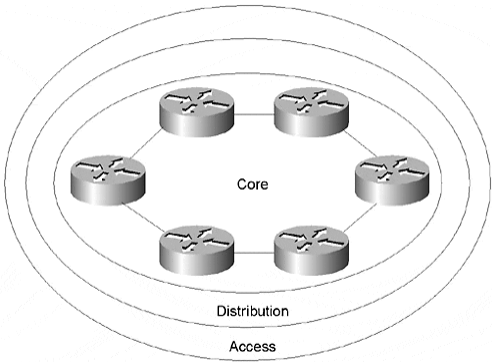CCIE Network Design FAQ: Redundancy
Q1. Why is it important to consider link capacities when designing redundancy?
Q2. Why is designing redundancy in the core easier than at other layers?
Q3. If all the core routers are in one building, what is a natural way to provide redundancy?
Q4. How many links on a ring core can fail before at least one section of the core is isolated?
Q5. Do ring designs provide consistent hop count through the core network when a link fails?
Q6. What ring technologies provide redundancy at Layer 2?
Q7. Do redundant ring technologies provide redundancy against failed devices?
Q8. Given a full mesh core with 25 routers, how many paths would there be through the network?
Q9. What method does a Cisco router use to differentiate between routes from two different routing protocols?
Q10. What is the first, and most important fac tor, used in deciding which route to use for a particular destination?
Q11. What mechanism in OSPF needs to be considered when it is being configured on a partial mesh network?
Q12. What are the possible techniques you can use in OSPF partial mesh network designs to get around this problem?
Q13. When dual homing a distribution layer or access layer router, what major problem should you be careful of?
Q14. When interconnecting the distribution or access layer router to provide redundancy, what issues should you be careful of?
Q15. What are the two main goals you must be careful to address when building redundancy into a network?
More Resources
